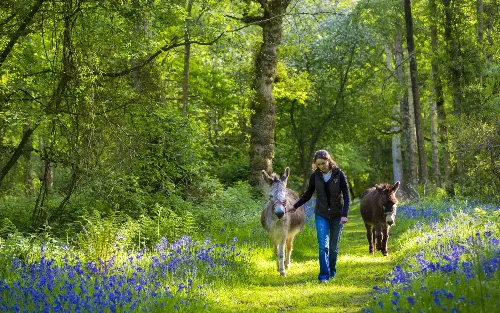
A new net zero forest will be planted on swathes of farmland from the Cotswolds to the Mendips.
The Western Forest will include 20 million trees on farmland and in cities including Bristol and Swindon by 2050 to help balance out greenhouse gas emissions to hit the Government’s net zero goals.
Nearly three-quarters (73 per cent) of the land for new trees will be agricultural and farmers and landowners will be paid to plant trees from taxpayer funds, with other funding from private investment and cash from housing developers.
The Government has fallen behind on ambitious and legally binding targets to increase tree cover across England from 14.5 per cent to 16.5 per cent by 2050.
The £7.5 million scheme to create 2,500 hectares of new woodland between Gloucester and Salisbury, the first new national forest in 30 years, will pay farmers significant sums to plant new trees.
Threat to farming
But there are concerns that the push for new woodland will displace food production and less productive agriculture, such as tenanted sheep farming.
Commenting on the announcement of the new national forest, George Dunn of the Tenant Farmers Association, said: “This is a Government which appears to be keen to look at removing land from agriculture, rather than doing what it said it would do in making food security, national security.
“We have seen very little from this Government about how it intends to build the resilience, the capacity and the profitability of the sector.”
A recent policy document from the environment department suggested some 10 per cent of farmland would need to be taken out of food production to meet net zero and nature targets.
Defra said the scheme would not allow woodland to be created on the most productive agricultural land, and would encourage farmers to integrate forestry into their food production.
“This is about resource, funding and expertise coming directly to landowners, partners and communities, planting millions of trees in the right places,” said Alex Stone, the chief executive of Forest of Avon, England’s Community Forests.
“Together, we will enhance landscapes for all to enjoy, improving the lives of our 2.5 million residents and visitors to the region.”
The Western Forest, the first of three pledged by the Labour Government before the election, will not be a single continuous woodland, but will increase coverage of trees in five priority areas.
These include land between Chippenham and Warminster and between Bristol and Gloucester.
Under the existing England Woodland Creation Offer, farmers could receive almost £23,000 per hectare of new tree planting. That compares to £20 per hectare for fields in the most basic green farming payments scheme, which was paused by the Department for Environment Food and Rural Affairs last week.
It comes after the Government announced the release of wild beavers in England and a comprehensive ban on neonicotinoid pesticides used on sugar beet crops.